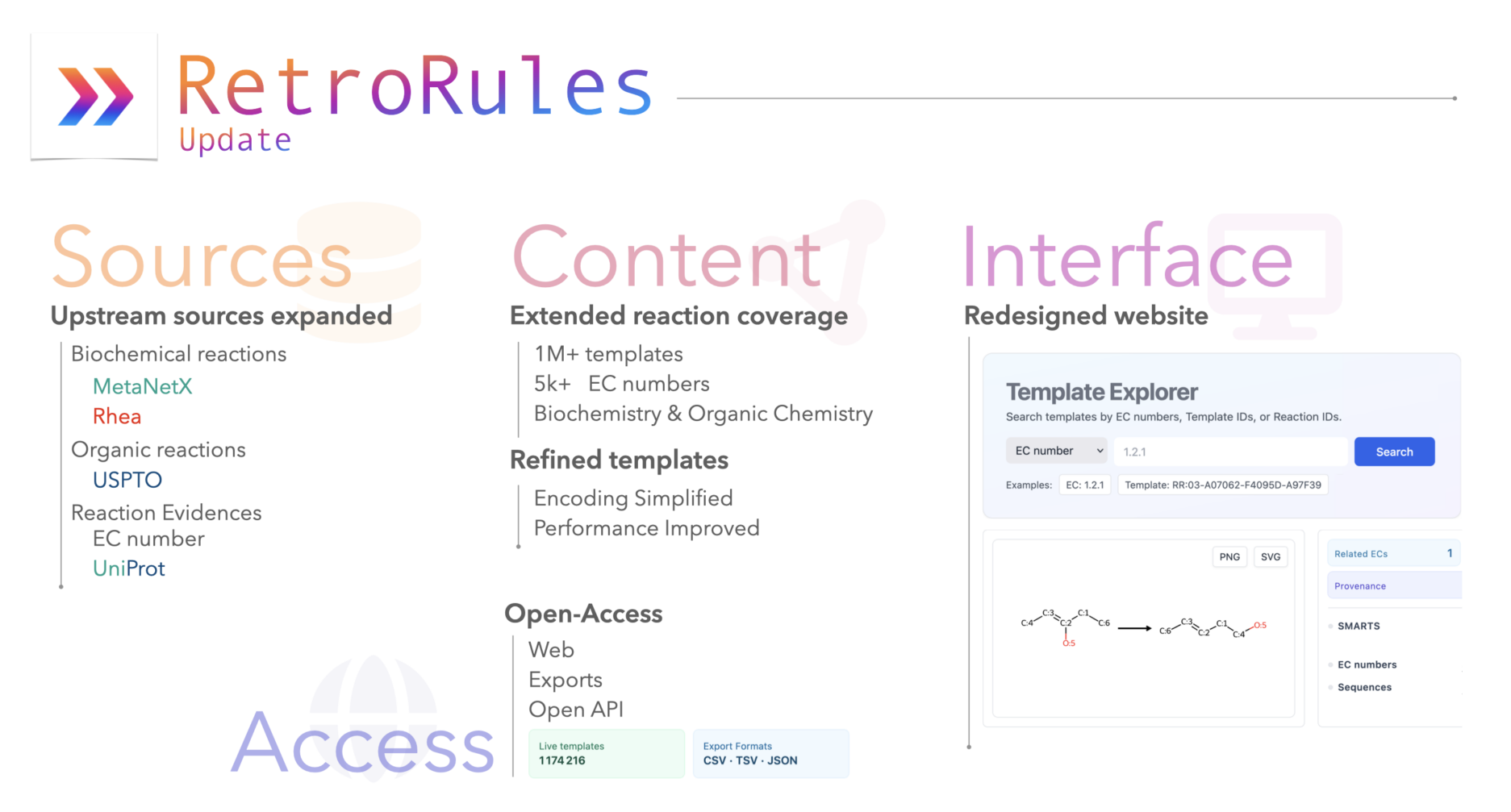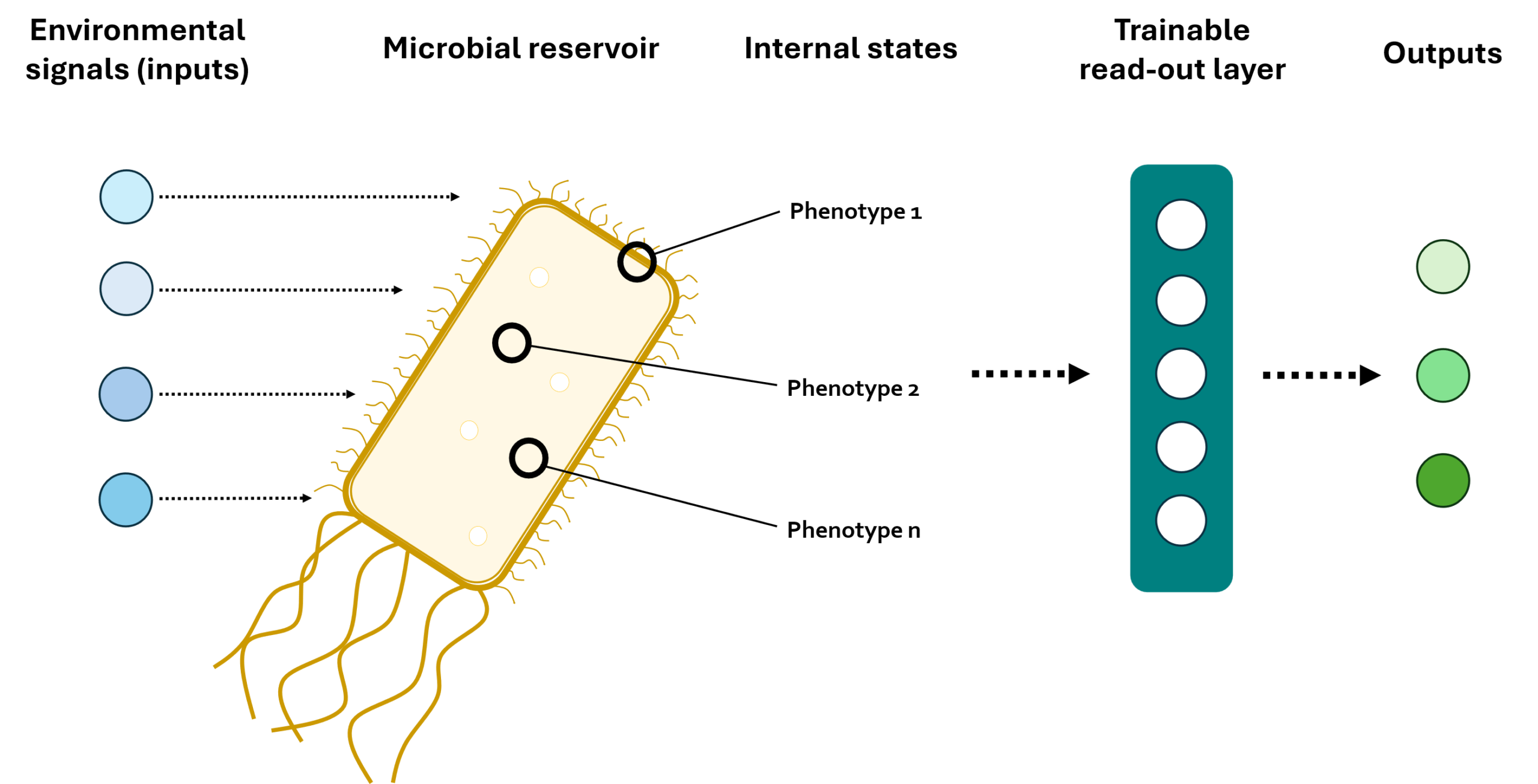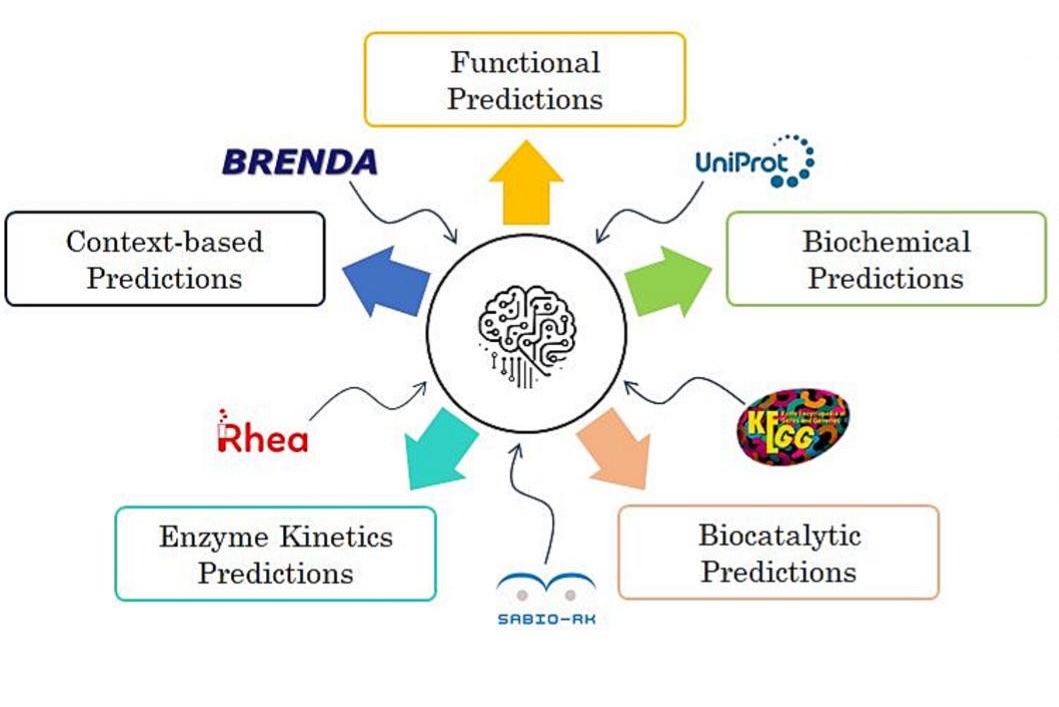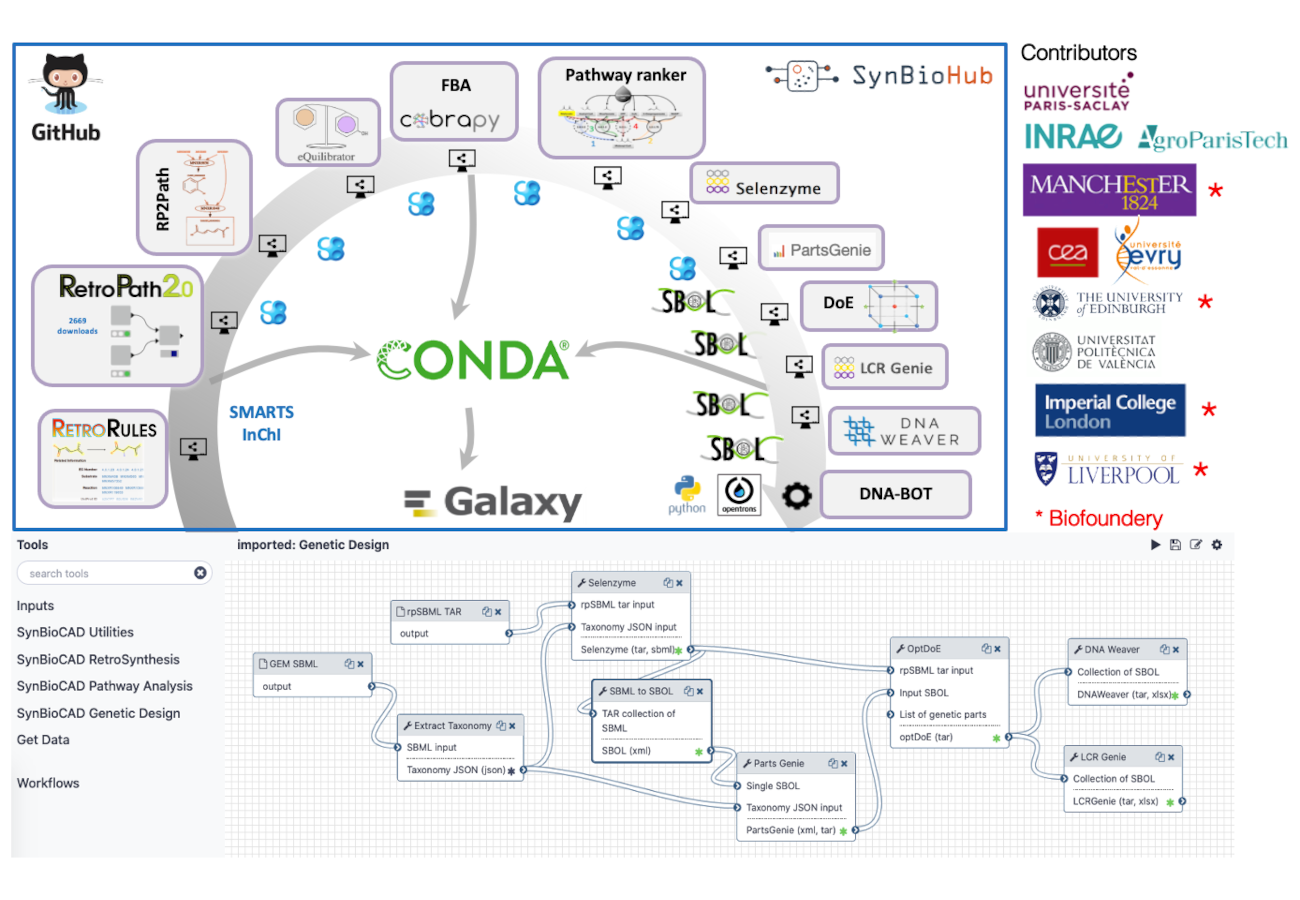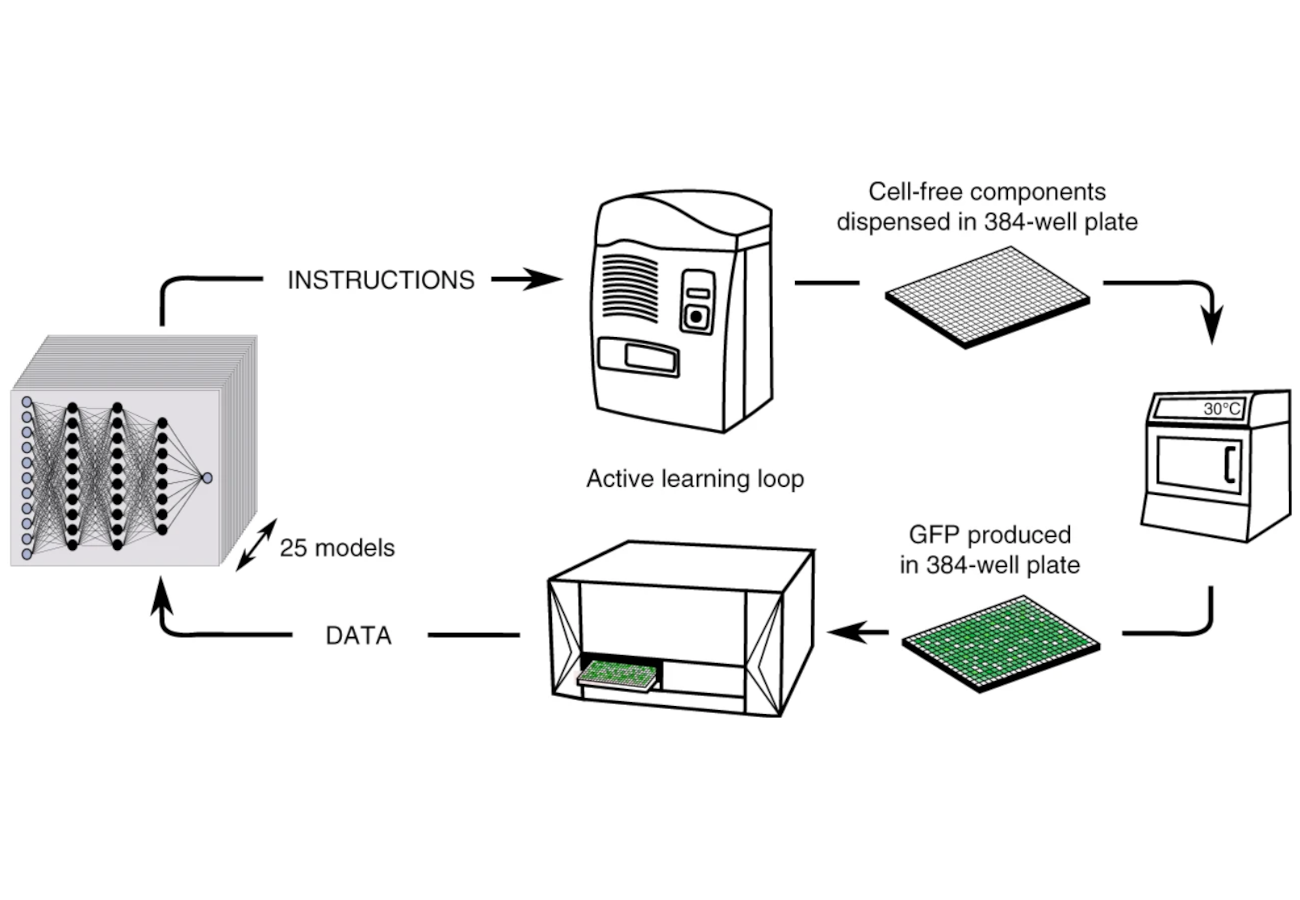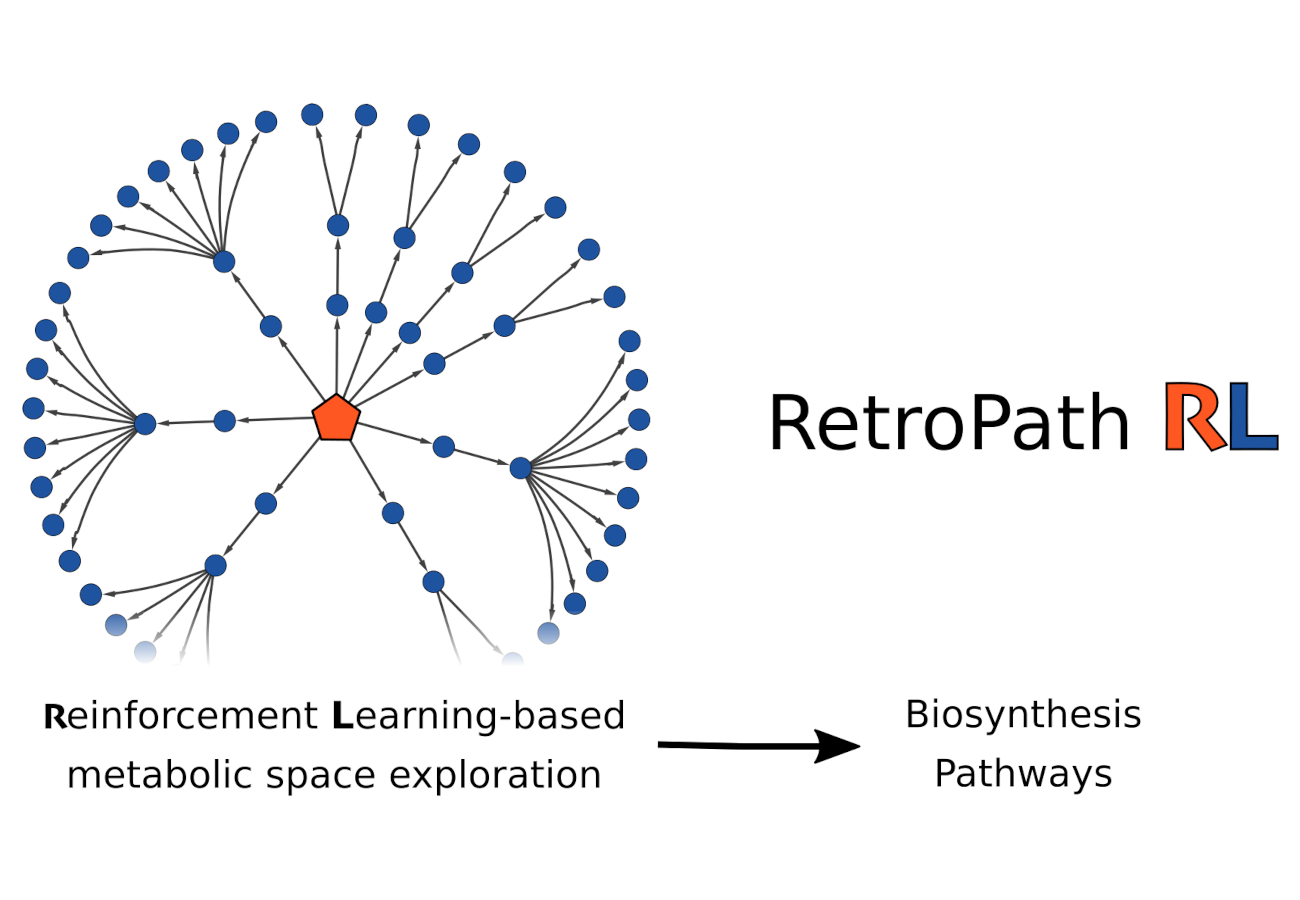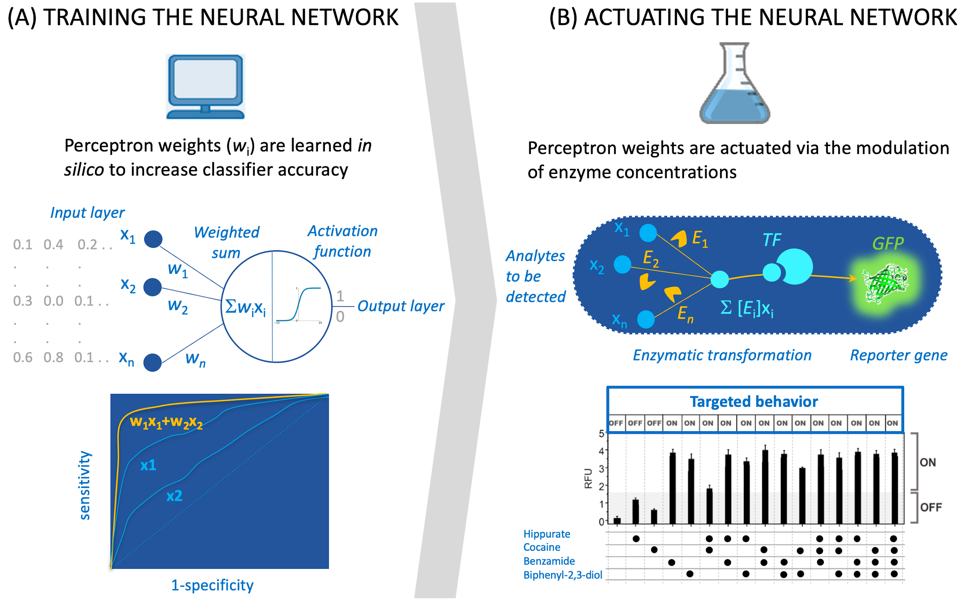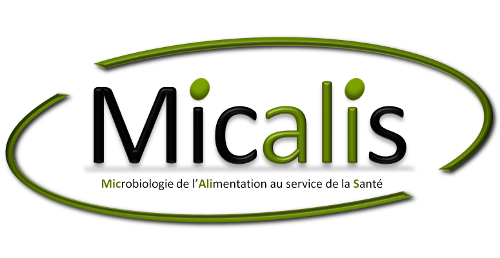RetroRules (https://retrorules.org) is an open resource of reaction templates, which are generic reaction representations that describe the atomic transformations underlying biochemical reactions. These templates are
Engineering microbial computers has been a longstanding endeavor in synthetic biology. Like other unconventional computing disciplines, the goal is to bring computation into real-world scenarios.
Reverse engineering in molecular design aims to identify optimal structures based on activities, or properties, computed through molecular descriptors like fingerprints. This task is known
Harnessing Artificial Intelligence for Predictive Biocatalysis We are advancing the field of predictive biocatalysis through cutting-edge machine learning approaches. Our team (BRS team at MICALIS,
In a recently published article in iScience, researchers from the University of Paris-Saclay and the University of Lyon 1 have developed a software suite to
Constraint-based metabolic models have been used for decades to predict the phenotype of microorganisms in different environments. However, quantitative predictions are limited unless labor-intensive measurements
We believe that the synthetic biology and metabolic engineering communities need to be provided with easily acessible and usable computational tools enabling them to apply
Cell-free lysates are a major platform for in vitro protein production but batch-to-batch variation makes production difficult to predict. A research team from the Micalis
Metabolic engineering aims to produce chemicals of interest from living organisms, to advance toward greener chemistry. Despite efforts, the research and development process is still
While machine learning methods are used in many areas, including human health, interfacing these methods with the living world has been little explored at the
